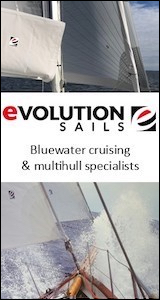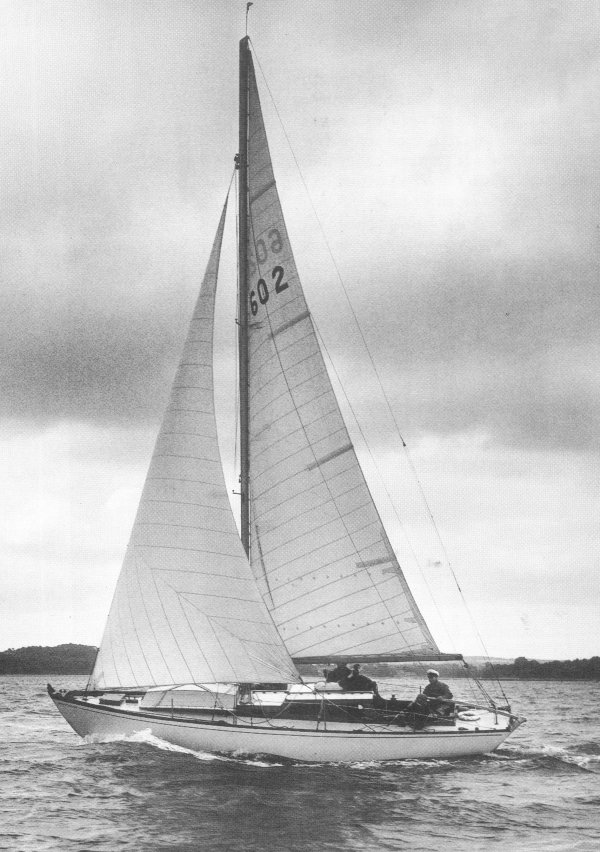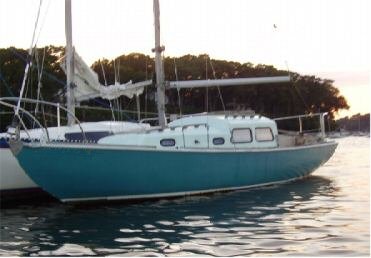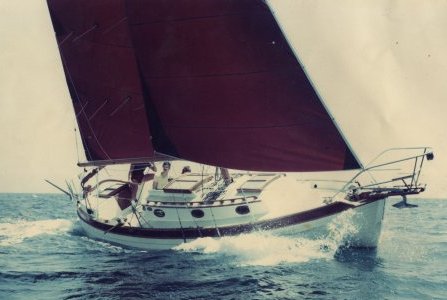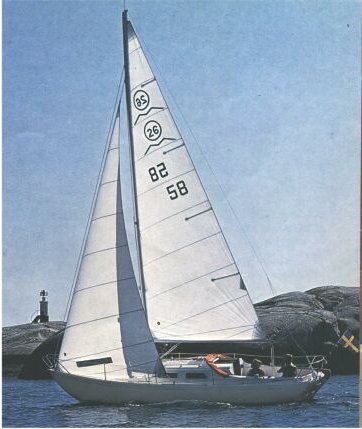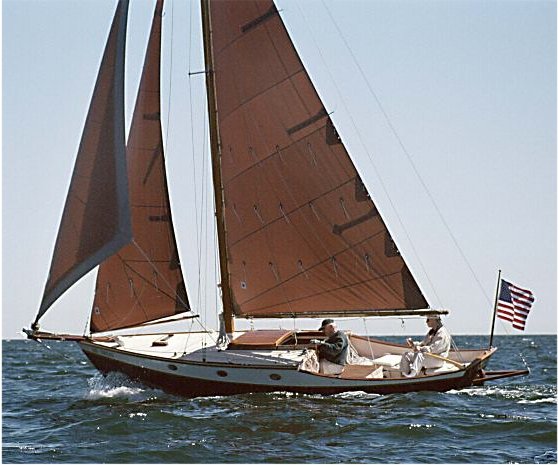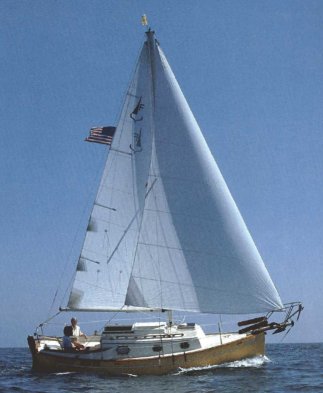The FRISCO FLYER was first produced as the PACIFIC CLIPPER and later as the OFFSHORE 26. The name “Frisco Flyer” originated with the Richard Reed, yacht brokerage in San Francisco. Their brochure decribed it as a “modified Folkboat.” The FOLKBOAT was originally designed by Tord Sunden, and modifications to the design were made by unnamed Cheoy Lee staff. There are three types, all available with various options (diesel vs. gas, stainless vs. plow steel rigging, canvas vs. teak decks, etc.):
a. PACIFIC CLIPPER: all teak, small trunk cabin, original Folkboat-like fractional rig with double spreaders and returning shrouds. Sometimes referred to as a FRISCO FLYER Mark I.
b. FRISCO FLYER Mark II, larger teak trunk cabin, masthead rig.
c. FRISCO FLYER Mark III, larger teak doghouse cabin, some standing headroom, masthead rig.
The first FRISCO FLYER was built in 1957 and made two single-handed Atlantic crossings that year.
Hull: Long keel w/trans. hung rudder
Folkboat style
The CONTESSA 26 was first built in England by Jeremy Rogers Ltd. A year or so later, molds were shipped to J.J. Taylor and Sons Ltd. of Canada.
In 1983, a number of modifications were made to the Canadian version. with deck and interior significantly re-designed.
Standard aux. power was 6.6 hp Peter gas engine. For later boats, a Farryman diesel was offered as an option.
In 1984, the Canadian version was renamed the TAYLOR 26 because of licencing disputes, even though, construction of the CONTESSA 26 in the UK ceased not long afterward when a fire destroyed the the original molds.
About 400 CONTESSA and TAYLOR 26s were built in Canada, with the last boat delivered in 1990.
Thanks to Jeremy Rogers Ltd. for providing information on all Contessa models.
Photo courtesy of Adam Hunt.
RNSA = Royal Naval Sailing Association. One of the first ‘offshore one-designs’ and the brainchild of Capt. J.H. Illingworth. His own ‘Minx of Malham’, the first of this design, proved itself in it first season by taking the RORC small-class championships of 1949.
Boats of this design were also built in Hong Kong and Australia.
Based on the INTERNATIONAL FOLKBOAT.
Also known as the CONTINENTAL FOLKBOAT, WHITBY 25 FOLKBOAT, GREAT LAKES FOLKBOAT, WALTON 25. Thanks to ‘daveyjustin’ for contributing updated information on this yacht.
LOD: 23 ft/ 7m
Thought to be based on Herreshoff PRUDENCE 23 design.
Many were sold as bare hulls or kits.
The BERMUDA 30 was an adaptation of the Herreshoff H-28 offshore ketch. One of the first ‘yachts’ built by Cheoy Lee, she was available in wood (teak) and later, with a fiberglass hull and wood deck/superstructure.
Available with tall rig (34.5′; 376 sq.ft.) and short (30.5′; 335 sf). Standard (2500 lbs.) and heavy (3000 lbs.) ballast packages were available in the early boats. After 1980, all boats were made with 3100 lbs.’ ballast.
Thanks to user ‘boatworks.thoreau’ for supplying corrected information on this yacht.
At least 30 built of wood since 1931. Adapted for Fiberglass construction in 1968.(Edey & Duff).
Rig measurements are from an article by Bruce Bingham in The Small Boat Journal.
Pacific Seacraft lists the rig at:
I = 27.9 ft
J = 10.5 ft
P = 23.83 ft
E = 9.5 ft
And the Displacement as 6,000 lbs
Began as plans available for amateur builder.(Over 200 sets sold)
The designer began building a plug for a Flicka of his own, but circumstances forced its sale to Nor’star Marine, CA, USA, before completion.
By 1975, Nor’star was building Flicka’s, either as owner-finished kits, or boats completed under contract by Westerly Marine of Cosa Mesa.
In 1977 Nor’star ceased production.
In 1978 Pacific Seacraft bought the tooling and built it’s version until 1998.
Over the years other Flicka’s have been built from varying materials. Decks, interiors and rigs can differ widely.
